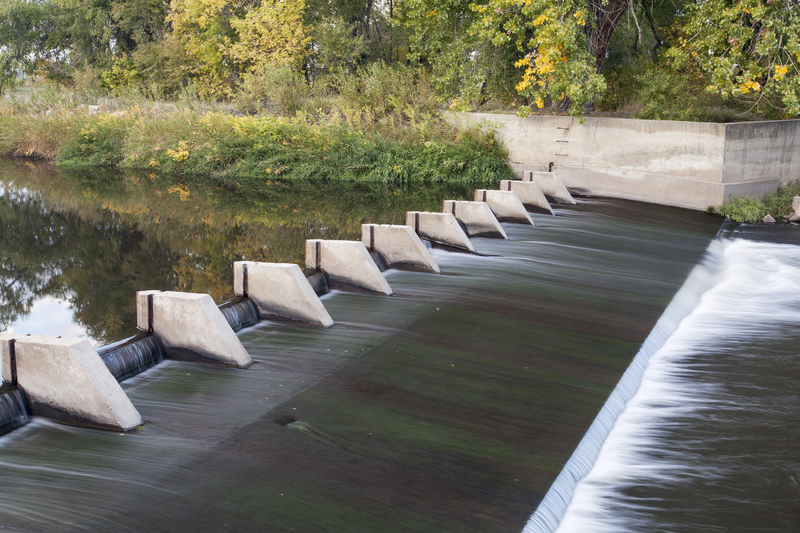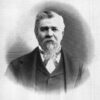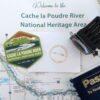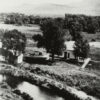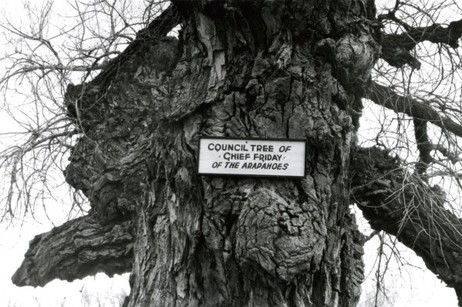
The Poudre River’s recorded history, prior to gold seekers and settlers arriving in the late 1850s and early 1860s, is scarce. There were fur trappers’ and explorers’ writings of the area, but these were very limited regarding the Poudre River. It was during this period that the river obtained its name, but the exact reasons and timing are uncertain. It is generally agreed that fur traders/trappers needed to stash some of their supplies (including gun powder – in French it becomes ‘Cache la Poudre’), for a short time, during the 1820s or 1830s, for some reason, and the river was named for this action.
As gold seekers and settlers encountered the Poudre River Valley in the mid-1800s, I often wonder what they saw. We know that the river today is not like the natural stream before it was adapted to support permanent settlement of large numbers of people.
Before permanent settlement in the Poudre River valley, the river meandered in a shallow, braided fashion through the bottomlands. Each spring, runoff flooded (i.e. ‘irrigated’) the valley bottomlands in such a manner that there was an excellent stand of native grasses growing across the valley floor from the mouth of the canyon to the mouth of the river, east of Greeley. One place, open to the public, to visualize this low, flat, bottomlands is the Arapaho Bends Natural Area. As you stand near the remains of the Strauss Cabin, you can gaze across the valley floor (removing Rigden Reservoir from visualization) toward the west and see the bluff with Ziegler Road on top. Look east to the bluff where I-25 is now located with the town of Timnath on the east side of the interstate. Looking upstream the valley widens as the Box Elder Creek enters the Poudre River. Imagine the entire bottomland area covered with native grasses and trees growing along the river meandering through the valley.

The lushness of grasses drew buffalo into the valley. It becomes rather obvious why the Native Americans used the area to camp – food, water, fuel – all in abundance. Just north of the Strauss Cabin, across the railroad tracks, is where the Council Tree was located. Large numbers of Native Americans could camp in the vicinity to ‘Council’, as the early setters called Native American gatherings, – i.e. transact business, socialize, and conduct ceremonies – while living comfortably on the resources provided by the river.
This lushness did not escape the attention of earlier settlers to the area. George Strauss (1858) and Benjamin Eaton (1859), traveling through the area on other missions, noted the lushness and both returned to settle in the valley when their missions were completed. The Coy family decided to over-winter in the valley on their way to California in 1862, but did not continue their trip when spring arrived. The Valley is a beautiful place where many people, over the years, have chosen to settle.
The Northern Arapaho, under the leadership of ‘Chief’ Friday, were the last band of Native Americans to live/visit the Poudre River Valley, being forced out in the late 1860s. Before leaving, they requested a reservation on the north bank of the Poudre River, on which to live, but were denied. Friday’s band eventually was assigned to live on the Wind River Indian Reservation in central Wyoming.
References:
Silkensen, G. 1993. South Platte River Observations: Historical Clues to the Evolution of a River’s Ecology. Published in the Proceedings of the 1992 South Platte Conference, Information Series Number 72, Colorado Water Institute, Colorado State University, pages 41-56. http://www.cwi.colostate.edu/publications/IS/72.pdf
Simmons, Marc. 2004. Friday: the Arapaho Boy – a Story from History. Children of the West Series, University of New Mexico Press, Albuquerque.
Burris, Lucy. 2006. People of the Poudre: An Ethnohistory of the Cache la Poudre River National Heritage Area, AD 1500-1880. (Published through a cooperative agreement between the National Park Service, Friends of the Poudre, and the Cache la Poudre River National Heritage Area)

